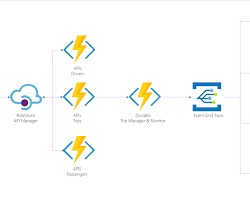
In the dynamic landscape of web development, React has established itself as one of the most popular JavaScript libraries for building user interfaces. Over the years, React has continually evolved to meet the demands of modern web applications. One of the latest advancements in the React ecosystem is the introduction of React Server Components (RSCs), which represents a significant paradigm shift in server-side rendering (SSR). In this article, we will delve into the evolution of React Server Components, exploring their inception, motivations, benefits, and practical implementation.
Inception of React Server Components
The concept was presented as a revolutionary approach to server-side rendering, aiming to address the challenges and limitations associated with traditional server-side rendering techniques.
The primary motivation behind React Server Components was to enable developers to build applications where certain components are rendered on the server, while others are rendered on the client, depending on their dynamic nature. This hybrid rendering model combines the best of both server-side rendering and client-side rendering, offering improved performance, scalability, and developer experience.
Motivations for React Server Components
Several motivations drove the development of React Server Components:
Performance Optimization: Traditional SSR renders the entire application on the server for each request, which can lead to unnecessary overhead, especially for large-scale applications. React Server Components allow selective rendering on the server, reducing the amount of work needed to generate the initial HTML response.
Improved Developer Experience: With React Server Components, developers can write components that seamlessly switch between server and client rendering without having to manage complex hydration logic manually. This abstraction simplifies the development process and enhances code maintainability.
Enhanced Scalability: By offloading certain rendering tasks to the server, React Server Components enable better utilization of server resources and improve the scalability of applications, particularly in scenarios with high traffic or resource-intensive components.
SEO and Accessibility: Server-side rendering is crucial for search engine optimization (SEO) and accessibility, as it ensures that content is readily available to crawlers and screen readers. React Server Components provide a more flexible approach to SSR, allowing developers to optimize content delivery for both users and search engines.
Benefits of React Server Components
The adoption of React Server Components offers numerous benefits for developers and end-users alike:
Selective Rendering: React Server Components enable selective rendering on the server, allowing developers to choose which components to render on the client and which to render on the server based on factors such as performance requirements and data sensitivity.
Improved Performance: By rendering certain components on the server, React Server Components reduce the time-to-interactive (TTI) and improve the perceived performance of web applications, particularly on low-powered devices or slow network connections.
Simplified Hydration: React Server Components abstract away the complexities of hydration, the process of attaching event listeners and state to the client-rendered components. This simplification leads to cleaner code and fewer opportunities for bugs related to hydration.
Enhanced Security: Server-side rendering helps mitigate security risks such as cross-site scripting (XSS) attacks by sanitizing user input on the server before rendering it to the client. React Server Components extend this security benefit by enabling server-side rendering for sensitive or potentially vulnerable components.
Practical Implementation of React Server Components
Let’s explore a practical example of implementing React Server Components in a web application. Consider a simple e-commerce website where certain components, such as product listings and search results, need to be rendered on the server for better performance and SEO, while others, like interactive forms and user preferences, can be rendered on the client.
// ProductList.server.jsx (Server Component)
import React from 'react';
function ProductList({ products }) {
return (
<ul>
{products.map(product => (
<li key={product.id}>{product.name}</li>
))}
</ul>
);
}
export default ProductList;
In the above example, we have separate implementations of the ‘ProductList’ component for server-side and client-side rendering. The server component (‘ProductList.server.jsx’) is responsible for rendering the product list on the server, while the client component (‘ProductList.client.jsx ‘) is responsible for rendering it on the client.
To use React Server Components in our application, we need to define a new component that dynamically switches between server and client rendering based on the execution environment:
// ProductList.jsx (React Server Component)
import React from 'react';
function ProductList({ products }) {
if (typeof window === 'undefined') {
// Server rendering
return <ProductList.server products={products} />;
} else {
// Client rendering
return <ProductList.client products={products} />;
}
}
export default ProductList;
By encapsulating the logic for server and client rendering within a single React Server Component, we achieve a clean and concise implementation that abstracts away the complexities of hydration and allows for flexible rendering based on runtime conditions.
Conclusion
React Server Components represent a significant evolution in server-side rendering, offering developers a more flexible, efficient, and secure approach to building modern web applications. By selectively rendering components on the server or client based on dynamic requirements, React Server Components enable better performance, scalability, and developer experience.
As the React ecosystem continues to evolve, React Server Components are poised to play a crucial role in shaping the future of web development, empowering developers to build fast, resilient, and accessible applications that meet the demands of today’s digital landscape. With their myriad benefits and practical implementation, React Server Components have undoubtedly revolutionized the way we approach server-side rendering in React applications.





